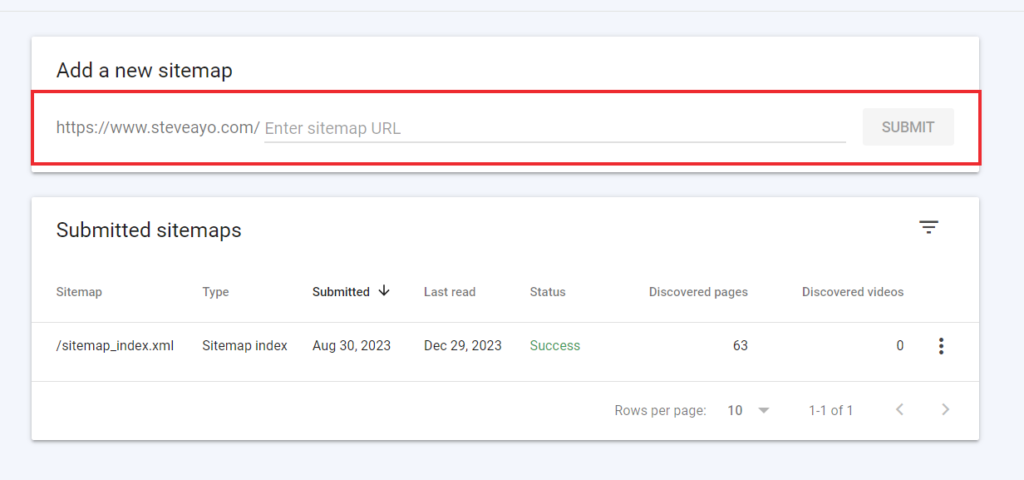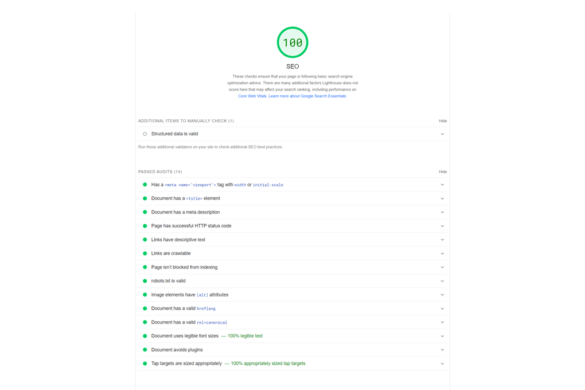Table of Contents
Have you ever found yourself typing your website name into Google, eagerly awaiting to see it appear in the search results, only to be met with disappointment? If your site isn’t showing up on Google, you’re not alone, and there could be several reasons behind this frustrating issue.
In this article, we’ll explore common reasons why your site might not be making an appearance on Google and, more importantly, how to fix these issues.
Note:
If you have just created a page or requested Google to index it, it might take some time for it to be done. Give it at least a week after you’ve requested this before jumping to conclusions that there is an issue with your site’s Google ranking.
Here are 7 reasons why your site isn’t showing up on Google | How to fix poor rankings
You might be asking yourself, “Why isn’t my website showing up on Google?” this depends on a variety of factors.
These are in the top 10 reasons, along with solutions, why your website won’t appear on Google or why its ranking is so low that it won’t show up in the search results.
- Your site is pretty new
- Your website contains “no index” tags
- Technical SEO Issues
- There’s a penalty on your site
- Backlink Quality: Friend or Foe?
- Your keywords are too competitive
- Your site isn’t giving users a great experience
1. Your site is pretty new
Google may take some time to find newly created pages and websites. Therefore, if your website or page has just recently launched, Google hasn’t yet found it, which is the most straightforward explanation for why it isn’t showing up in the search results.
You can use the Google search query site:yourwebsite.com to see if Google has found your website or page.

To find out if Google is aware of a particular page, enter its complete URL in the search bar: site:yourwebsite.com/blog/the-page-im-looking-for/
Google has found your page if at least one result appears! If you see nothing, Google has not yet found your webpage.
Here’s how to address this issue:
If you’re not finding any results for your website on Google, you can fix that by making and submitting a sitemap to Google Search Console. When you make a sitemap, you’re telling Google which pages on your site matter and where to find them.
Here’s what you need to do:
- Log in to Google Search Console
- Go to Sitemaps
- Type in your sitemap URL
- Hit Submit

2. Your website contains “no index” tags
A “no index” meta tag is a snippet of HTML code that instructs Google not to display specific pages in its search results. Essentially, if this code is present, Google won’t include those pages in its index.
It’s a good practice to ensure that your webpage doesn’t have the “no index” meta tag, even if you don’t recall adding it. Occasionally, platforms like WordPress or other content management systems may automatically insert it into every page, especially if you unintentionally select certain settings during website creation.
Moreover, developers might use the “no index” code to prevent Google from ranking pages still in development. Unfortunately, they might forget to remove the tag once the page is finished.
Here’s how to address this issue:
- Utilize Google Search Console to easily identify pages marked with “no index.” Visit your Page indexing report and look for the error message: “Submitted URL marked ‘noindex.'”
- If Google hasn’t crawled the pages in your sitemap yet (remember, this might take some time), you can use the Ahrefs Site Audit tool to check for any “no index” meta tags on your site.
- Once you’ve identified pages with this tag, simply remove it from those pages where it shouldn’t be present.
3. Technical SEO Issues
Another reason your website might not be appearing on Google is that there could be something hindering the search engine from crawling your site.
Most websites have a file called “robots.txt” which essentially informs search engines about areas they shouldn’t access on your site. This means that Google won’t be able to explore any web addresses that are restricted in your “robots.txt” file.
Here’s how to address this issue:
Keep an eye on Google Search Console, as it can notify you about problems related to the “robots.txt” file. Go to your Page indexing report and check for an error labeled “submitted URL blocks by robots.txt.”
To resolve this, simply eliminate any directives that are preventing the URLs you want to be visible on Google. It’s worth noting that dealing with “robots.txt” files can be a bit tricky. If you’re uncertain about how to navigate them, it’s advisable to seek assistance from an expert, such as SteveAyo, to rectify the issue.
4. There’s a penalty on your site
If your website isn’t showing up on Google and it’s been around for a while with a proper robots.txt file, penalties might be the culprit. Google can penalize or even temporarily or permanently remove your site from search results if it doesn’t meet their quality standards.
Google penalties come in different forms:
- Deindexed: Your domain is completely removed from Google’s search results.
- Penalized: Your domain still exists, but your pages won’t show up in direct searches. This penalty can occur due to a Google algorithm update or manual application by Google.
- Sandboxed: Your Google traffic takes a sudden hit, but your domain hasn’t been deindexed or penalized.
Here’s how to address this issue:
- Monitor Google Search Console for penalty alerts.
- If penalized, make necessary modifications to your website to align with Google’s guidelines.
- Submit your site for reconsideration to get it back on Google’s search results.
5. Backlink Quality: Friend or Foe?
If you’re wondering why your website isn’t showing up on Google, it could be because you need to gather more high-quality backlinks. Regularly audit your backlink profile. Reject toxic backlinks that may be harming your site’s reputation. Building quality backlinks from reputable sources is key.
Google takes various factors into account when deciding which websites should appear in search results, and one crucial factor is backlinks and overall authority.
When other websites link to your site, it signals to Google that your content is reliable and valuable. If your website isn’t ranking on Google, it might be because those above you in the rankings have more backlinks.
Here’s how to address this issue:
Utilize tools like Ahrefs to assess your page’s backlinks compared to others in the search results. If your website is lacking, focus on building more backlinks.
Consider these tips to generate more backlinks:
- Request backlinks from existing partners.
- Ask people who mention your brand on social media to link to your website.
- Create useful and valuable content that others would want to link to.
- Engage in forums, interviews, and blogs, providing a relevant link to your website when appropriate.
6. Your keywords are too competitive
If you’re reading this and finding yourself frustrated because your awesome content isn’t getting the visibility it deserves on Google, it’s time to reassess your approach to keywords.
Attempting to compete for high-demand keywords, especially against bigger brands, might not be the best strategy for your business. Instead, consider focusing on longer, more specific phrases that consist of three or more keywords.
Even though long-tail keywords may not have as many searches each month, they come with less competition. This increases your chances of landing at the top of search results. Additionally, long-tail keywords often indicate a more precise search intent.
For instance, if someone types in a broad term like “outdoor equipment,” it’s unclear what exactly they’re looking for. Are they seeking equipment setup instructions? Researching the best gear for a camping trip? Wanting to buy a particular type of outdoor gear?
On the flip side, if someone searches for the long-tail query “buy compact portable stove,” you can be fairly certain they’re ready to make a purchase.
For businesses in the outdoor gear industry, targeting the long-tail phrase “buy compact portable stove” makes it easier to rank, and they can tailor their content to match that specific intent.
Here’s how to address this issue:
Effective SEO efforts always kick off with thorough keyword research. Tools like Keyword Tool, and Google’s Keyword Planner can help identify long-tail keywords with less competition that bring significant value to your business.
By targeting less competitive phrases, you’ll enhance your chances of appearing in Google search results and connecting with a broader online audience.
7. Your site isn’t giving users a great experience
If your website isn’t providing a good user experience (UX), say goodbye to those top rankings. Search engines prefer to promote content and websites that offer visitors a positive page experience.
When users don’t enjoy their time on your site, they won’t hesitate to hit the back button. That sends a message to Google that your site isn’t worthy of a high rank.
Enhancing the UX on your site can lower bounce rates, capture visitors’ interest, and help them discover more about your business. Plus, it contributes to a higher ranking in search results.
Here’s how to tackle it:
- Make your site load faster by utilizing page speed optimization services.
- Simplify your site’s navigation so that users can easily find information.
- Incorporate visual elements to spice up the content and keep visitors engaged.
FAQs
Can Google penalize my site for using certain SEO techniques?
Yes, engaging in black-hat SEO practices can result in penalties. Stick to ethical and recommended strategies.
White-hat SEO: These are ethical and recommended strategies that align with search engine guidelines. White-hat SEO focuses on improving a website’s visibility through methods that provide value to users. Examples include creating high-quality content, using relevant keywords, and building genuine, quality backlinks.
Black-hat SEO: On the other hand, black-hat SEO involves tactics that violate search engine guidelines to achieve quick but often unsustainable results. These practices aim to manipulate search engine algorithms rather than genuinely improving the user experience. Examples of black-hat techniques include keyword stuffing, cloaking, buying links, and using hidden text.
How long does it take for changes to improve my site’s Google visibility?
The timeframe for improving your site’s Google visibility depends on various factors, including the competitiveness of your niche and the effectiveness of your strategies. While some changes might yield noticeable results within a few weeks, achieving substantial improvements typically requires consistent efforts over a few months. Patience and persistence are key in the dynamic landscape of search engine optimization.







Add your first comment to this post